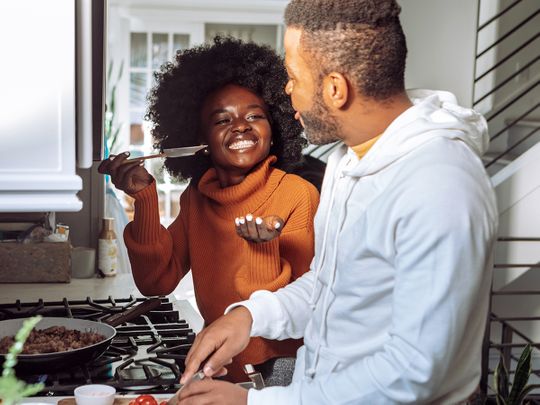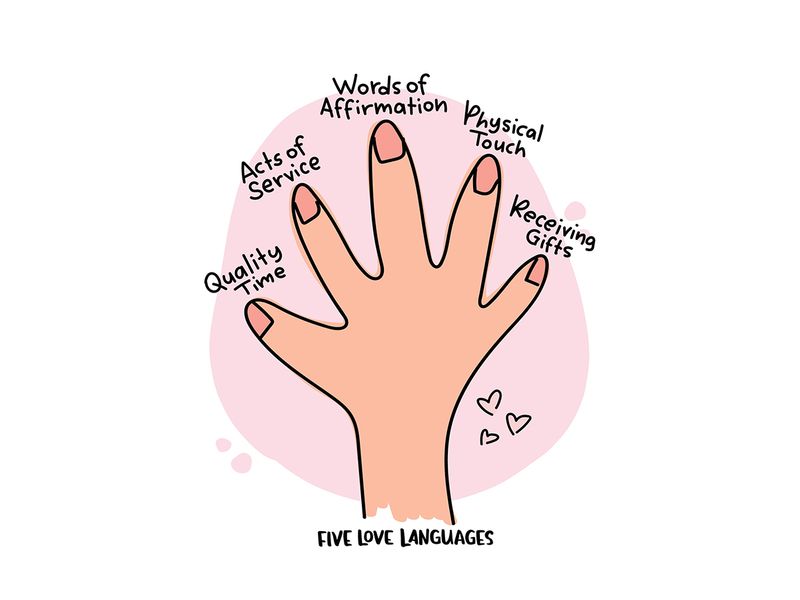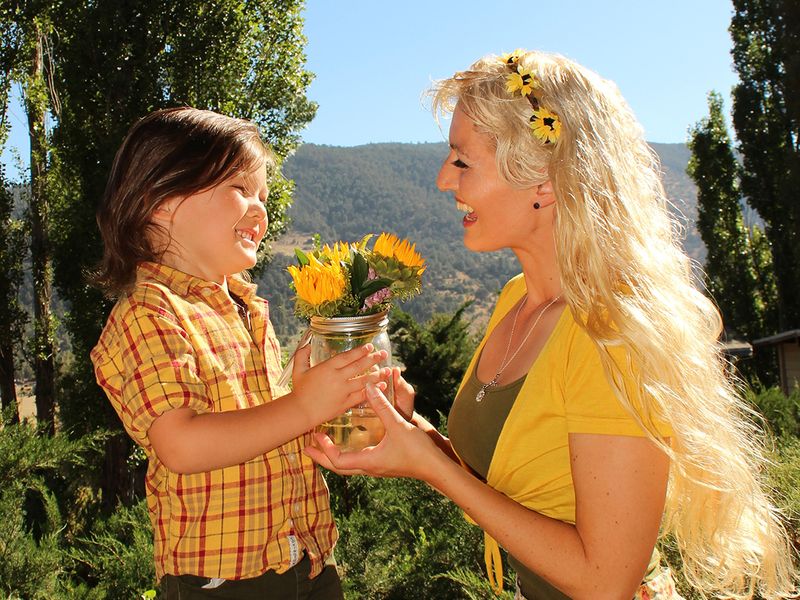
Communication is complex as it is, more so when two people are speaking in completely different languages. To overcome that barrier is to learn each other’s languages, of course. American author Gary Chapman uses the same analogy in his book ‘The Five Love Languages (1992)’, to make a case for partners who hear love in their own ways.
Thirty years later, Gen Z are scurrying to figure out what their love language is, thanks to Chapman’s online quiz. It didn’t take long for the test results to speak for the young population, much like the Myers-Briggs Type Indicator (MBTI) personality quiz that was plastered on nearly every social media bio.

We all have different ways of giving and receiving love.
If you search ‘love language’ on TikTok, you would see a library of clips totalling to one billion views. But it’s not just pop-psychology buzz fanned by twenty somethings. Relationship counsellors in the UAE, too, use Chapman’s framework to help partners understand each other’s needs more effectively.
“We all have different ways of giving and receiving love,” Resha Erheim, mental health counsellor with Wise Mind Center in Dubai, told Gulf News.
“As a couples therapist, I use this tool often to bridge miscommunication and gaps in understanding, and it’s often eye opening for couples to understand how different they are when it comes to how they feel loved the most.”
The five ways of loving

Before he penned his book, Chapman looked back on the three decades he spent counselling spouses. There was a recurring issue in his sessions: partners wanted to be loved in a certain way, but these needs were not being met.
Imagine taking your loved one out to celebrate their birthday with friends, when all they wanted was to spend quality time at home together. If you knew their preference beforehand, you could have avoided disappointing your partner or, worse, invalidating their feelings.
To tackle such misunderstandings, Chapman then scribbled down five common ways in which we listen and respond to love, and called them the five love languages. He writes: “We must be willing to learn our spouse’s primary love language if we are to be effective communicators of love.”

It’s important to learn to speak our children’s and partner’s love languages, so that we can display love the way they understand and need it the most.
“It’s important to learn to speak our children’s and partner’s love languages, so that we can display love the way they understand and need it the most,” added Erheim. “This solves miscommunication and feelings of neglect in relationships.”
What is my partner’s love language?
Figuring out which love languages you and your partner speak weaves a blanket of security, says Hima Mammen, consultant psychologist for family therapy at Human Relations Institute and Clinics, Dubai. Bringing that kind of awareness into a partnership means that you are clear on how to love them and they on how to love you back.
If you want to understand how to better love a significant other, parent, child or friend, read on. We’ve listed all five languages with tips for practising each.
1. Words of affirmation

This is your loved one’s first love language, if they value verbal support above all. Think back to the times you’ve complimented them or cheered them on during a particularly hard task. Chances are, they’ve been waiting to hear from you.
People who seek positive affirmation find their emotional needs met through kind, encouraging words. This validates them and their feelings.
Speaking the language: Chapman says words of affirmation work even when the partner is not around; for instance, praising them in front of others in their absence. Leaving sticky notes around the house with uplifting words or kind reminders could be another way. Erheim suggests comments like “You’re really good at this…”, “thank you for the meal; it was delicious…” or “I appreciate it when you….”
2. Quality time

Even if it’s just watching the television in total silence, your company will be deeply appreciated by your loved one. If they’re actively planning outings, movie nights or get-togethers, then quality time is their love language.
“You could have two people sitting across, and one person wants quality of time and the other person is on the phone. The person is there… but they’re not really there,” said Mammen. “It’s important to find out what that quality of time looks like for the one who needs it.”
Speaking the language: Besides taking out the time to do activities together, quality conversation matters, too. Chapman says those who have quality time as their love language often just wish for people to converse with them meaningfully. Other ideas include allocating some time of the day to sit down and catch up or even picking up a sport together.
3. Receiving gifts

This love language tends to get a bad rap for its materialistic implications, says Mammen. But there’s more to it than just wanting to be lavished with expensive gifts. To the speakers of this language, the cost of the gift is going to matter little, writes Chapman.
Any trinket could be symbolic of your love because “it’s the thought that goes behind the gift,” added Mammen.
Speaking the language: Pick up something on the way when you think of them – from flowers to dessert. Chapman suggests gifting a plant as a steady reminder of your affection. Beyond objects, being physically present to celebrate their milestones is also a form of gift.
4. Acts of service

Action more than words moves the speakers of acts of service – if they’re offered practical help, they see it as a show of affection. Acts of service can look like running errands, offering a ride to a friend’s house, cooking or taking up chores around the house.
“People sometimes feel loved that way; knowing that the other person is present, doing things for you proves you can depend on them,” said Mammen.
Speaking the language: Look around and see if there is anything you can do to help your loved one, even if it’s been a busy day for you. Love can reveal itself in the smallest of gestures, like from holding the shopping bags to making a cup of tea.
5. Physical touch

The power of touch can ground someone with this love language. For them, physical expressions of love communicate proximity and warmth, especially in times of distress. Out of all five, the language of physical touch can come with more barriers than others, since consent is key. It would be best to make your boundaries clear beforehand, if you think this is your love speak.
Speaking the language: Celebrate their happy moments with a big hug or hold their hand when you think they’re nervous. Even a pat on the back goes a long way to emotionally validate a loved one.
Communicate your findings with your partner

Did you find yourself relating to all five? That’s completely normal, because these are all various expressions of affection. Almost always, however, there will be one that speaks to you on a deeper level – your primary love language.
Double-check with Chapman’s online quiz on love languages. It quantifies the values you assign to each language, with the primary carrying the highest percentage. After the verdict is in, check in with reality. How do you or your partner usually show affection? Oftentimes, we apply our own love language to others, in hopes that they’ll mirror us.

Asking these questions to yourself first and then probably bringing them up in a conversation when it’s the right time, could be a step towards identifying love languages in your relationships.
“Notice what your partner complains about – what is it that your partner needs the most? Asking these questions to yourself first and then probably bringing them up in a conversation when it’s the right time, could be a step towards identifying love languages in your relationships,” said Mammen.
What does a love language say about someone?

A love language in its essence is an emotional need. Could it be that wanting these needs met hints at something deeper?
According to Erheim, “our love language is usually what we lacked in childhood from our caregivers”. For instance, if words of affirmation resonated with you or your partner the most, then verbal support was most likely absent in childhood.
We step into a relationship with our own set of unique experiences that define us. This should also explain why your primary love language can differ from your partner’s altogether.
While Mammen agrees that love languages are linked to early years, she also adds that they’re not set in stone and can change with time.
“People are constantly changing, in their 30s and 40s. Even Chapman says in his book that love languages can be influenced,” said Mammen. “There is more to you than what your love language says.”












